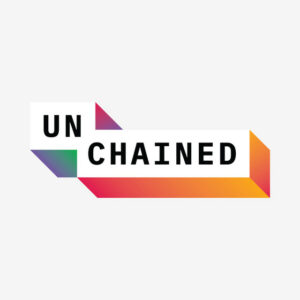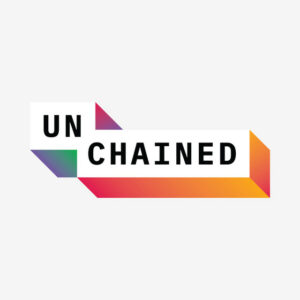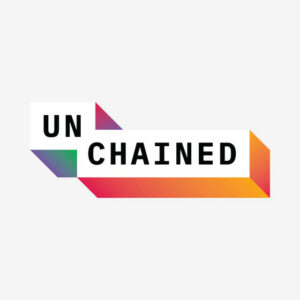
Posted February 1, 2024 at 2:33 pm EST.
It’s a bit of an odd time to be a high-profile crypto advocate. On the one hand, memories of 2022 are still fresh — FTX Superbowl ads, Do Kwon’s outrageous promises, and the cataclysmic aftermath of such calculated criminality are all still present in the public’s mind. The approval of the Bitcoin ETFs has helped reverse that perception somewhat – but with chatter mostly focused on price appreciation, it’s not a tremendously deep contrast with the hype of two years ago.
So thank your stars for a16z venture capitalist Chris Dixon, whose new book Read Write Own: Building the Next Era of the Internet is probably the single best effort to make the definitive case for why crypto really, really matters. Dixon places blockchain and crypto in the context of the history of the Internet, and specifically in the context of ongoing contests over the power to control it.
At the heart of Dixon’s argument are the ideas that network design determines who really controls the Internet; that the current status quo of corporate-owned networks is harmful to both users and developers of digital tools; and that blockchain networks can restructure that power to spark a new era of openness and innovation.
Dixon makes this case methodically, covering nearly every angle of the current state of blockchain technology. Drawing on a clearly deep immersion in more than a decade’s worth of debate on “crypto Twitter,” Dixon guides readers carefully through compelling arguments for why blockchains should and will continue to gain traction. Read Write Own is probably the definitive crypto guide for savvy, but non crypto-native, observers who want to follow (or invest in) these developments.
The book is perhaps most notable for its breadth. It provides a functional explanation, real-world examples, and possible future use cases for practically every kind and category of digital asset, structure, and feature. If you want to make the best credible case for, say, NFTs to someone who thinks they’re about nothing but scammy monkey jpegs, this is the book to give them. If you’re working in crypto and want your parents to respect your life choices, asking them to read this is genuinely worth a shot.
Dixon also handily dispenses with one nocoiner canard after another, patiently explaining, for instance, why it’s a nonsensical to argue that we should be building blockchains, but getting rid of those pesky speculative tokens.
Read more: A16z Crypto’s Chris Dixon on How Blockchains Can Save the Internet
Networks Are Power
Dixon’s book is most useful, not as an explainer of what blockchains are, but in making the case for why they matter. And Dixon has honed in on a very strong and simple thesis there: Blockchains matter because they support open, interoperable networks.
Read Write Own opens with a truly shocking bit of historical context: no new open, protocol-based digital network has been successfully launched since the appearance of email and the web. The closest we’ve seen is RSS, a decentralized news feed format that lost traction in the early 2010s, in Dixon’s telling, by the rise of both mobile phones and Twitter.
The bulk of Dixon’s broader argument focuses on the role of “corporate networks” like Twitter, Facebook, Google, and yes, even Apple in transforming the Internet from something open and exciting into something increasingly locked down and static. The two issues he’s preoccupied with are interoperability, and what he refers to as “take rates.”
Read more: 9 Top Crypto Trends to Watch for in 2024, According to a16z
Even the most casual tech observer is probably familiar with the issue of take rates – or what an economic theorist might describe as “extractive rent-seeking” by dominant corporate digital networks. Dixon rightly points out that it is only by building carefully walled gardens that Apple became able to take 30 percent of App Store sales, or Facebook to keep 99.9999% of the revenue generated by its users’ activities.
Dixon makes a particularly strong version of the argument for sharing more social media revenue by focusing not on typical users, but on creators. He argues that, if Facebook and other social networks were under greater competitive pressure and had fewer moats, they would have sent something like an extra $130 billion to news organizations, musicians, documentarians, filmmakers, and others in recent years. Instead, those creators are trapped in and exploited by the social networks whose value they drive.
That kind of money, sent to creators instead of disproportionately profitable network owners, would revitalize not just “the Internet,” but the entirety of global culture and communications. This is particularly striking in the context of recent dramatic cutbacks in the news industry – Dixon convincingly traces their floundering directly to the dominance of closed, corporate networks like Facebook.
Read more: a16z Backs $33M Raise for Blockchain Game Studio Proof of Play
This seems confirmed by the relative success of startups built on exceptions to the walled-garden model: email newsletters; podcasting, which still runs on the remnants of RSS; and YouTube, which for historical reasons shares far more revenue with creators than any other major corporate network.
Notably, YouTube is also among the most valuable networks, making up an estimated $160 billion of Google’s market cap. This suggests that many networks would benefit long-term by voluntarily lowering their take rates, but are somehow unable to change their models at this point. And here, of course, is where blockchain networks enter the picture.
Coding Legos on Stable Platforms
Dixon’s points about interoperability will be familiar to some readers, but are more obscure – and even more striking. Dixon takes us back to the era before 2010, when networks like Facebook, Twitter, and even Netflix commonly had very open “APIs” that allowed outsiders to build on or around them. Most famously, Facebook was the birthing ground for game developer Zynga, but Twitter may have been a better overall example, with the dozens of services and frontends that grew up around its success.
But one by one, these APIs and interactions were stripped away, as part of what Dixon dubs the nearly inevitable “attract-extract” cycle of corporate networks. These networks benefitted from openness early on, but as they became centers of gravity, they decided to cut off interoperability to control more returns. When Facebook cut off Zynga, the large, successful gaming company barely avoided instantaneous collapse. Most of the Twitter applications were not so lucky when Jack Dorsey decided to start restricting interoperability around 2011-2013.
Read more: 2024 Crypto Predictions: Signs Point to Yes
What Dixon shows here is that, in the era of interoperability, new businesses were constantly succeeding on top of social networks. Those businesses offered added or altered services that customers wanted, and in the long term, continued openness would likely have made the networks themselves more valuable. But competitive forces encouraged closed networks, destroying jobs and innovation, and fundamentally making the Internet worse for users.
Worst of all, the Great Internet Enclosure of the early 2010s showed entrepreneurs that the networks could make drastic changes whenever they wanted. Even what little opportunity remained to build startups on top of social networks has become largely irrelevant, because entrepreneurs know that even those privileges could be revoked at any moment.
And here, of course, is where the third, “ownership era” of the Internet comes in. Dixon argues above all that blockchain networks make firm and enforceable commitments to openness – not Google’s “don’t be evil,” but the much more reliable “can’t be evil” enforced by blockchain networks.
Dixon roots his defense of blockchains as an architecture for digital networks in this very difficulty of changing them. Blockchains’ unchangeability in theory makes it more difficult for networks to do the things, like cutting off APIs and raising fees, that corporate networks are nearly forced to once they reach a certain stage of the “attract-extract” cycle. This in turn makes blockchain-based networks far, far more appealing for startups to build on than corporate networks that are free to change the rules at any time.
Read more: Vitalik Buterin’s ‘Defensive Accelerationism’ Fits Squarely Into the Ethos of Ethereum
Dixon also makes no bones about the importance of the financial aspects of blockchains – perhaps the toughest argument to make with those memories of 2022 still floating around. He argues not just for the obvious technical importance of financial rewards for blockchain security, but for the more expansive roles of tokens in providing support for developers and other subsidies.
Such subsidies, he points out, are common in corporate networks, allowing them to provide better user experiences and incentives. Dixon specifically argues that RSS died in part because Twitter had more capital, and that the blockchain model for building open networks provides a mix of the benefits of the corporate and protocol-based varieties.
Unanswered Questions
Given what he argues about the importance of finance and ownership in maintaining open networks, Dixon also rejects the possibility that we can focus on blockchain tech and dispense with what he calls “the casino” – the widespread culture of trading, speculating, or outright gambling with blockchain tokens.
Dixon does make some suggestions for mitigating the harms of the speculative side of crypto. But one weakness of Read Write Own is its fairly brief discussion of regulation, mostly limited to presenting problems rather than solutions. As Dixon rightly diagnoses, the casino-like elements of blockchain tech can’t be fully separated from their technological advantages. And Dixon is correct that securities laws applied to tokens would hamstring most of their benefits, above all by requiring that they only be moved or traded through a conventional securities broker.
But somewhat understandably, Dixon doesn’t develop a comprehensive proposal for what “good” token regulation would look like. His main concrete idea is unambiguously correct – the need for token lockup periods after the launch of new networks to help prevent hype-based pump and dump scams. Beyond that, he doesn’t have many answers on this front. It’s a missed opportunity, but it’s also simply not the focus of the book.
The book’s other notable shortcoming is a subtle but important one: while it’s a great book for non-crypto natives, Dixon isn’t really writing for true tech novices, or even really those new to blockchains. Chapters presented as introductions to basic concepts like tokens are considerably more conceptual than technical, but also don’t offer the kind of punchy metaphors that can make a novice feel comfortable with the immense complexity of blockchain dynamics.
Shying away from slogans or easy just-so stories isn’t exactly a sin – this is a serious book about technology development, not an attempt to sell you something with flashy rhetoric. But the level of abstraction may leave some readers a bit unmoored.
Finally, I have to take issue with one of Dixon’s specific points: that blockchain networks will and should eventually transition fully from expensive and high-energy proof-of-work structures like Bitcoin, to low-energy proof-of-stake security models like Cosmos and, now, Ethereum.
It’s understandable that Dixon doesn’t want to get into the genuinely complicated and thoroughly propagandized debate over PoW energy expenditure, but his endorsement of PoS lacks crucial context, at best. It is absolutely not a settled matter that, as Dixon claims, “proof of stake is as secure as proof of work.” Proof of work also has certain features, such as democratic mining, that will give it enduring appeal.
In fact, Dixon barely mentions proof of work, which seems dicey given that it is the origin of blockchain networks, and in the form of BTC, their current firm economic foundation. As a practical matter, Bitcoin itself will never transition to proof of stake, and most believe it shouldn’t, so glossing over proof of work leaves Dixon’s educational work incomplete.
More generally, Bitcoiners will struggle to love this book – it barely mentions BTC, and Dixon seems bored by mere uncensorable global value transmission. This blind spot may be something of a product of the publishing cycle – Ordinals and other advanced features only came to Bitcoin as Dixon was at work on this book, making the previously transact-only network newly relevant to the sprawling Web3 vision.
These shortcomings, though, largely amount to nitpicks. They don’t stop Read Write Own from being an excellent one-stop introduction to the potential of blockchain for smart, tech-savvy novices. Its optimistic read on the potential of open blockchain networks to reshape the Internet is also a welcome, bracing reminder for those of us who have been along for crypto’s rocky ride so far.
We just went through a very hard, very discouraging rough patch. Dixon’s mission statement is a needed reminder to get back to work.
- SEO Powered Content & PR Distribution. Get Amplified Today.
- PlatoData.Network Vertical Generative Ai. Empower Yourself. Access Here.
- PlatoAiStream. Web3 Intelligence. Knowledge Amplified. Access Here.
- PlatoESG. Carbon, CleanTech, Energy, Environment, Solar, Waste Management. Access Here.
- PlatoHealth. Biotech and Clinical Trials Intelligence. Access Here.
- Source: https://unchainedcrypto.com/a16zs-chris-dixon-makes-the-definitive-case-for-why-blockchain-networks-and-tokens-really-matter/
- :has
- :is
- :not
- :where
- “can’t be evil”
- $UP
- 1
- 2010
- 2010s
- 2022
- 2024
- 30
- 33
- a
- a16z
- Able
- About
- above
- absolutely
- abstraction
- According
- activities
- added
- Ads
- advanced
- advantages
- advocate
- After
- aftermath
- ago
- All
- allowed
- Allowing
- along
- also
- altered
- among
- amount
- an
- and
- Another
- answers
- any
- APIs
- app
- app store
- appeal
- appealing
- Apple
- applications
- applied
- appreciation
- approval
- architecture
- ARE
- argue
- Argues
- argument
- arguments
- around
- AS
- asking
- aspects
- asset
- At
- attempt
- avoided
- away
- back
- backs
- basic
- BE
- became
- because
- become
- been
- before
- being
- believe
- benefit
- benefits
- BEST
- Better
- Beyond
- Billion
- Bit
- Bitcoin
- bitcoiners
- blind
- blockchain
- blockchain game
- Blockchain networks
- Blockchain security
- blockchain technology
- blockchain-based
- blockchains
- book
- Bored
- both
- breadth
- broader
- broker
- BTC
- build
- Building
- built
- businesses
- but
- by
- calculated
- Calls
- came
- CAN
- cap
- capital
- carefully
- case
- cases
- casual
- cataclysmic
- Category
- Centers
- certain
- change
- Changes
- changing
- chapters
- choices
- Chris
- claims
- clearly
- closed
- Collapse
- comes
- comfortable
- commitments
- Common
- commonly
- Communications
- company
- compelling
- competitive
- complexity
- complicated
- comprehensive
- concepts
- conceptual
- concrete
- CONFIRMED
- constantly
- context
- continue
- continued
- contrast
- control
- controls
- conventional
- Corporate
- correct
- Cosmos
- could
- course
- covering
- creators
- credible
- crucial
- crypto
- crypto trends
- crypto-native
- Culture
- Current
- Current state
- Customers
- Cut
- cutting
- cycle
- debate
- decentralized
- decided
- deep
- Defense
- definitive
- democratic
- describe
- Design
- determines
- develop
- Developer
- developers
- Development
- developments
- died
- difficult
- Difficulty
- digital
- Digital Asset
- directly
- discussion
- do
- does
- Doesn’t
- Dominance
- dominant
- Dont
- dorsey
- down
- dozens
- dramatic
- drawing
- drive
- dump
- dynamics
- Early
- easy
- Economic
- educational
- effort
- elements
- Email Newsletters
- encouraged
- Endorsement..
- enduring
- energy
- enforceable
- enforced
- Enter
- entirety
- entrepreneurs
- Era
- estimated
- ETFs
- ethereum
- Ethos
- Even
- eventually
- Every
- exactly
- example
- examples
- excellent
- exciting
- expansive
- expensive
- Experiences
- explaining
- explanation
- exploited
- extra
- fact
- fairly
- familiar
- famously
- far
- Feature
- Features
- February
- feel
- Fees
- fewer
- filmmakers
- finance
- financial
- Firm
- fits
- floating
- Focus
- focused
- focuses
- focusing
- follow
- For
- For Startups
- forced
- Forces
- form
- format
- Foundation
- Free
- fresh
- from
- front
- FTX
- fully
- functional
- fundamentally
- future
- Gain
- Gambling
- game
- gaming
- Gardens
- generally
- generated
- genuinely
- get
- getting
- Give
- given
- Global
- Google’s
- gravity
- great
- greater
- grew
- Ground
- guide
- Guides
- had
- hand
- Hard
- harmful
- harms
- Have
- he
- Heart
- help
- helped
- here
- high-profile
- his
- historical
- history
- How
- HTTPS
- Hype
- i
- idea
- ideas
- if
- immense
- immersion
- importance
- important
- in
- Incentives
- increasingly
- industry
- inevitable
- Innovation
- instance
- instead
- interactions
- Internet
- Interoperability
- interoperable
- into
- Introduction
- introductions
- Invest
- issue
- issues
- IT
- ITS
- itself
- jack
- Jobs
- JPEGs
- jpg
- just
- Keep
- Kind
- Know
- large
- largely
- launch
- launched
- Laws
- Leave
- Level
- Life
- like
- likely
- Limited
- little
- locked
- Lockup
- Long
- long-term
- Look
- look like
- lost
- love
- lowering
- made
- Main
- maintaining
- major
- make
- MAKES
- Making
- many
- Market
- Market Cap
- Matter
- Matters
- May..
- Media
- Memories
- mentions
- mere
- might
- mind
- Mining
- missed
- Mission
- Mission Statement
- mitigating
- mix
- Mobile
- mobile phones
- model
- models
- moment
- money
- more
- most
- mostly
- moved
- much
- musicians
- nearly
- Need
- needed
- Netflix
- network
- networks
- never
- New
- newly
- news
- Newsletters
- next
- NFTs
- no
- non-crypto
- notable
- nothing
- novice
- novices
- now
- observers
- obvious
- of
- off
- offer
- offered
- on
- once
- ONE
- ongoing
- only
- open
- Open Blockchain
- Openness
- opens
- Opportunity
- Optimistic
- or
- organizations
- Origin
- Other
- Others
- out
- outright
- over
- overall
- own
- owners
- ownership
- parents
- part
- particularly
- Patch
- patiently
- percent
- perception
- perhaps
- periods
- phones
- picture
- Places
- plato
- Plato Data Intelligence
- PlatoData
- pm
- Podcasting
- Point
- points
- PoS
- possibility
- possible
- posted
- potential
- potential of blockchain
- PoW
- power
- Practical
- practically
- Predictions
- presented
- pressure
- prevent
- previously
- price
- privileges
- probably
- problems
- Product
- profitable
- promises
- proof
- Proof-of-Stake
- Proof-of-Work
- proposal
- provide
- provides
- providing
- Publishing
- pump
- pump and dump
- raise
- raising
- Rates
- rather
- reach
- Read
- readers
- real world
- really
- reasons
- recent
- refers
- Regulation
- relative
- relevant
- reliable
- remained
- reminder
- reshape
- respect
- restricting
- restructure
- returns
- revenue
- reverse
- Rewards
- Rid
- Ride
- Rise
- rocky
- Role
- roles
- roots
- rss
- rules
- runs
- sales
- Save
- savvy
- say
- scams
- secure
- Securities
- Securities Laws
- security
- seems
- seen
- sell
- sent
- serious
- Services
- Settled
- Shares
- sharing
- shortcomings
- shot
- should
- showed
- Shows
- side
- Signs
- Simple
- simply
- since
- single
- smart
- So
- so Far
- Social
- social media
- social networks
- Solutions
- some
- somehow
- Someone
- something
- somewhat
- Spark
- specific
- specifically
- speculative
- Spot
- stable
- Stage
- stake
- Stars
- start
- Startups
- State
- Statement
- Status
- Still
- Stop
- store
- Stories
- strong
- structure
- structures
- Struggle
- studio
- succeeding
- success
- successful
- Successfully
- such
- Suggests
- Superbowl
- support
- Take
- takes
- tech
- Technical
- technological
- Technology
- Technology Development
- telling
- term
- than
- thank
- that
- The
- their
- Them
- themselves
- theory
- There.
- These
- thesis
- they
- things
- Thinks
- Third
- this
- thoroughly
- those
- though?
- Through
- time
- to
- token
- Tokens
- tools
- top
- traction
- traded
- Trading
- transforming
- transition
- trapped
- tremendously
- Trends
- true
- truly
- TURN
- two
- typical
- unable
- Unchained
- under
- understandable
- Understandably
- us
- use
- useful
- User
- users
- Valuable
- value
- venture
- venture capitalist
- version
- very
- vision
- voluntarily
- Walled
- want
- wanted
- was
- Watch
- we
- weakness
- web
- Web3
- welcome
- went
- were
- What
- when
- whenever
- which
- while
- WHO
- whose
- why
- widespread
- will
- with
- Work
- working
- worse
- worth
- would
- write
- writing
- years
- yes
- you
- Your
- youtube
- zephyrnet
- Zynga











